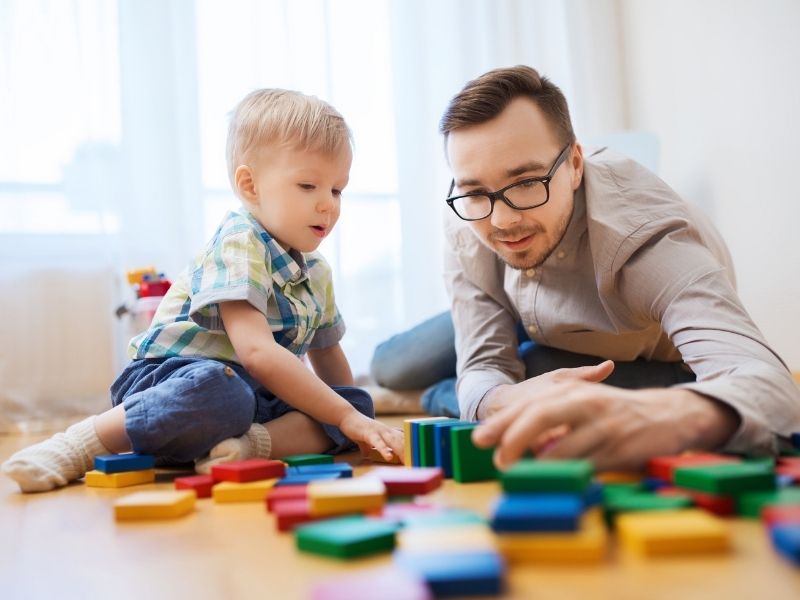Communication is a vital skill for children, and it’s not just about language or words, but rather the connection your baby feels with you. From about 20 weeks, the foetus can begin hearing its mother’s voice, and this marks the start of a long journey.
It’s no secret your little one appreciates the attention you give, but communicating in a meaningful way with your child is one of the best ways to build a bond and develop communication skills.
In this blog, we explore the different ways of communicating with your child and provide you with some easy and helpful tips to promote learning, communication and understanding.
What are the types of communication with children?
Communication with children can take two forms: verbal and nonverbal. Both forms are effective communication with children that engage your child’s senses and teach communication skills. But what exactly do these forms of communication entail?
Verbal communication
This type is the way you communicate with your words. This can be the words you say and use so your child can best understand, the tone of voice you use, making noises and singing lullabies for example.
Nonverbal communication
This type is the way you communicate through your body language. It can be intentional or unintentional, but it can include gestures such as smiling, eye contact, physical touch and simply paying attention for example.
5 Easy and Different Ways of Communicating With Your Child
Here are our five easy and helpful tips for effective communication with children that also help develop vital communication skills for your little one.
1. Take note of gestures, sounds, and looks

Taking note of gestures, sounds, facial cues, and eye contact and actively responding to these forms of communication is an effective way of encouraging your child to develop these skills. From a young age, you should try and respond to little markers. For example, if your baby coos or makes a sound, make a sound back. If your child throws their hands in the air and wants to show you something, mirror their actions so they know you care about their feelings and what they have to say.
2. Take time and listen
When talking to your infant or toddler, remember that communication is all new to them, and it may take some time for them to process words and cues. You should give them time to respond. Be sure to make eye contact and ask simple questions, so you can give them direction and encourage them to learn different ways to communicate.
Remember to make your requests and statements clear and simple. Choosing language that is appropriate for their age is also key, as using verbose language can make them feel confused and unsure of their skills. It’s also important to call for their attention before asking questions, as this allows them to give you their full attention and listen closely.
3. Turn activities into communication exercises

Make the most of daily activities like mealtime, reading time, and playtime by asking questions, and encourage the development of their communication skills whilst carrying out other activities. For example, if they’re playing with a ball, ask your child what colour it is and what they are doing with the ball. Reading time is a great opportunity for this, as you can explore every page and ask plenty of questions.
To make your reading time even more effective, let your child choose the book. The more interested your child is in reading, the more they will engage with the book, and it helps to build agency, self-confidence, and a bond between you and your child.
4. Narrate your actions

When your child is not actively communicating with you, consider narrating your actions to your little one. Tell them what you’re making for lunch, how you change their clothes, or how you tidy up for example.
As a parent, you’re your child’s introduction to the world, and what they see you do and say is important for their overall development. By narrating your actions, not only do they build an understanding of you and what you’re doing, but it also helps with building their vocabulary so they can communicate more effectively with you.
5. Create a safe space to communicate
Your little one is unique and will feel more comfortable expressing themselves when they don’t feel judged. Once your child has developed an understanding of emotions, be sure to listen to them and let them know you understand them. Children have different ways of communicating and some children may express their emotions verbally through words and phrases, or nonverbally through crying and laughing. By simply making them feel heard and understood, you can help develop their emotional intelligence.
Get in touch with us today
We hope our tips have helped build a better understanding of the different ways of communicating with a child. If you would like any further advice, get in touch with us today.
Stepping Stones Day Nursery is a wonderful Nottingham-based day nursery, and we’re committed to helping your little one develop in a safe and happy environment. We provide every child with support, education, enrichment and entertainment, so why not book a visit or enquire about a free trial session today?
